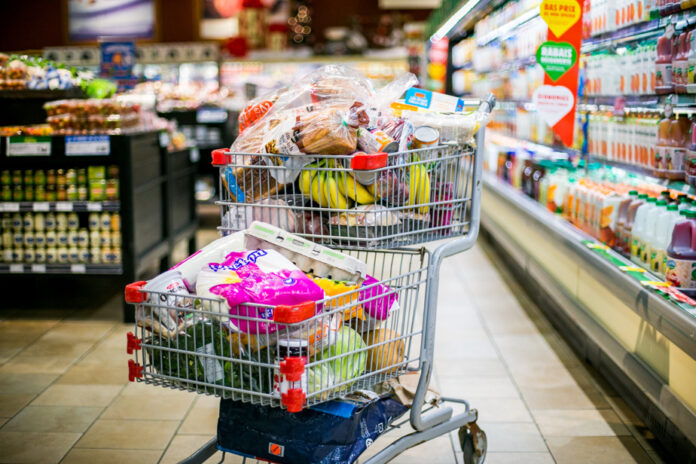After seeing their grocery bills skyrocket, could consumers take advantage of a lull? Although grocery price growth continues at a faster rate than inflation, it slowed in July, according to Statistics Canada, and some items are currently showing on the shelves the same price as in February, found La Press.
Tradition brand maple leaf cookie lovers started paying $1 more for their treats at Metro in February than in January, reaching $4.99. Currently, the box is displayed at the same price as six months ago. And examples like these, there are many others in the different brands. However, the price needle may have moved and prices fluctuated between February and August.
However, this summer “respite” could be short-lived, warns Pascal Thériault, an agronomist and economist at McGill University. And you still have to remember that the grocery bill remains high, he says.
Statistics Canada announced Tuesday a slowdown in the growth of prices in grocery stores from one year to the next with an increase of 8.5% in July, against 9.1% in June. On supermarket shelves, the price of several items is currently the same as what was displayed in February, La Presse found by carrying out a comparison exercise with a dozen products.
Go back. February 2023 marked the end of the price freeze on 1,500 No Name branded products sold at Maxi, Provigo and Pharmaprix. The period during which retailers did not accept any hikes from their suppliers also ended at the same time.
Thus, from the second week of February, customers circulating in the grocery store aisles quickly noticed that prices had started to climb again. At Maxi, for example, the price of No Name brand mild white cheddar cheese (400g) was set at $6.49, down from $5.99 on January 30.
In order to understand the evolution, following the publication of Statistics Canada data, La Presse carried out another comparison exercise on Tuesday between February prices and those posted on August 15. A dozen items from Maxi, Metro and IGA – from rice with butter to chicken nuggets, cans and yogurt – were selected. Results: The box of No Name brand saltine crackers is currently $3.29 at Maxi, the same price as in February. Same story for Benny’s Frozen Chicken Tenders
Pascal Thériault said he was not surprised by this observation. “We don’t seem to have any more problems with transport logistics, energy costs seem to be stabilizing. It’s summer, so if we look at groceries in general, it’s easier – even if we have a very bad harvest year in Quebec – to have local fruits and vegetables which temper prices. in the fresh. I think that this stabilization of prices there is normal. »
Last week, during the presentation of third quarter results, Metro President and CEO Eric LaFlèche hinted that there were signs that inflation was moderating. “Compared to last year, the number of price increase requests we receive from our suppliers decreased by 40% in the third quarter. However, the variation remains significant (in the range between 5% and 9.9%). »
“Yes, there is a drop in food inflation, confirms Marie-Claude Bacon, vice-president, public affairs and communications, of Metro, but it is still more important than before. »
“Is this a temporary lull?” asks Pascal Thériault. It will depend on the fall and winter we will have. »
“For the fall, we can’t speculate,” says Bacon cautiously.
Inflation across the country rose year over year last month, having been measured at 3.3%, compared to 2.8% in June.
Statistics Canada attributes the rise in the Consumer Price Index (CPI) mainly to a year-on-year effect linked to the price of gasoline, a sharp monthly drop observed in July 2022 no longer being taken into account in the variation over 12 months.
Excluding gasoline, the CPI rose 4.1%, up slightly from a 4% advance in June. Statistics Canada observed that gasoline prices posted a 12.9% year-over-year decline in July, following a 21.6% drop in June.
Statistics Canada reports that the Mortgage Interest Cost Index posted another record year-over-year increase of 30.6% and remained the main factor behind the increase in headline inflation.
The Bank of Canada expects inflation to hover around 3% over the next year in the country, before declining steadily to 2% by mid-2025. The central bank will make its next decision on the policy rate on September 6. The inflation rate increased year over year last month by 3.9% in Quebec, 3.4% in Nova Scotia, 2.9% in New Brunswick and 2.1 % in Prince Edward Island.















